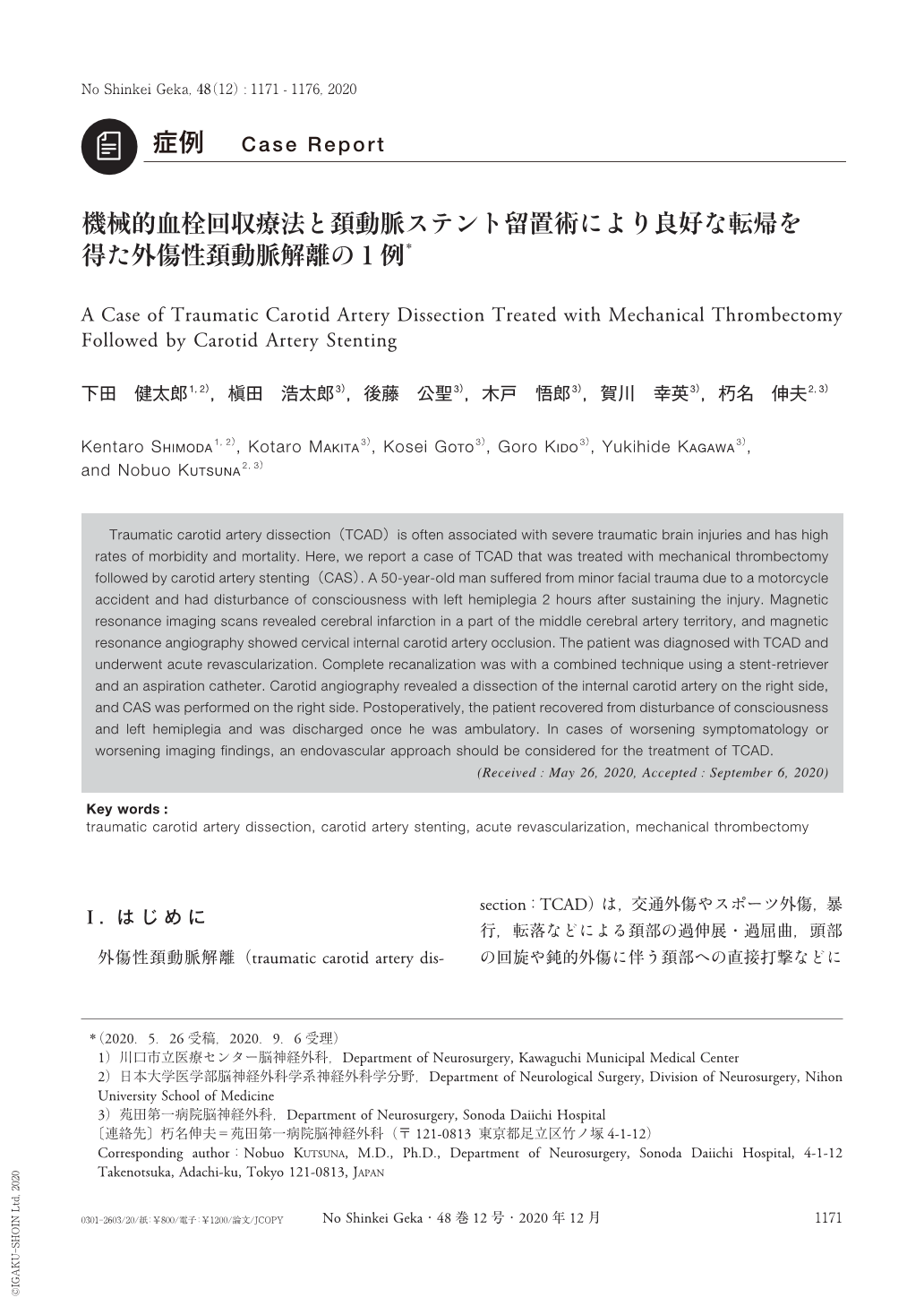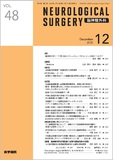Japanese
English
- 有料閲覧
- Abstract 文献概要
- 1ページ目 Look Inside
- 参考文献 Reference
Ⅰ.はじめに
外傷性頚動脈解離(traumatic carotid artery dissection:TCAD)は,交通外傷やスポーツ外傷,暴行,転落などによる頚部の過伸展・過屈曲,頭部の回旋や鈍的外傷に伴う頚部への直接打撃などに起因する稀な疾患である15).脳梗塞やくも膜下出血を発症した場合,不良な転帰をたどることが多い9).従来,重症頭部外傷の合併症として外傷センターや救命救急センターから報告されることが多かった15).今回,二次救急の現場で受傷後徐々に神経脱落症状が出現して診断されたTCADを経験した.TCADに対して,機械的血栓回収療法と頚動脈ステント留置術を併用することによって良好な転帰をたどった1例について,文献的考察を加え報告する.
Traumatic carotid artery dissection(TCAD)is often associated with severe traumatic brain injuries and has high rates of morbidity and mortality. Here, we report a case of TCAD that was treated with mechanical thrombectomy followed by carotid artery stenting(CAS). A 50-year-old man suffered from minor facial trauma due to a motorcycle accident and had disturbance of consciousness with left hemiplegia 2 hours after sustaining the injury. Magnetic resonance imaging scans revealed cerebral infarction in a part of the middle cerebral artery territory, and magnetic resonance angiography showed cervical internal carotid artery occlusion. The patient was diagnosed with TCAD and underwent acute revascularization. Complete recanalization was with a combined technique using a stent-retriever and an aspiration catheter. Carotid angiography revealed a dissection of the internal carotid artery on the right side, and CAS was performed on the right side. Postoperatively, the patient recovered from disturbance of consciousness and left hemiplegia and was discharged once he was ambulatory. In cases of worsening symptomatology or worsening imaging findings, an endovascular approach should be considered for the treatment of TCAD.

Copyright © 2020, Igaku-Shoin Ltd. All rights reserved.


